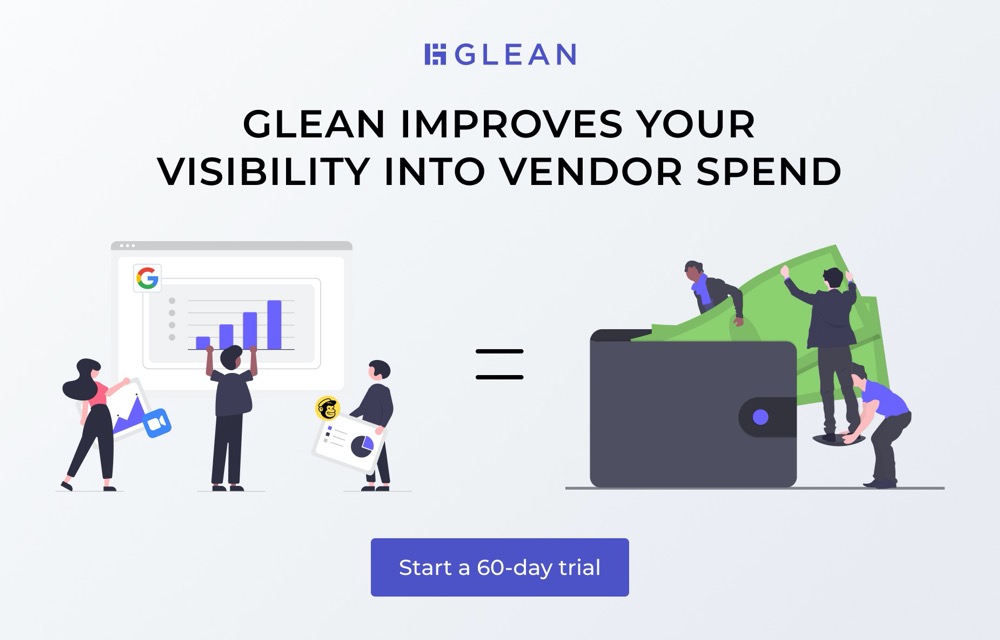Each year, US startups and other small businesses collectively waste $130 billion dollars because of poor visibility into their vendor spend. That’s $130 billion dollars of profit that has to be re-earned; of lost equity that needs to be replaced; of wasted expense that’s not being reinvested to grow the business.
If you’re a CEO, department head, or part of a Finance or Accounts Payable team, you’re aware that managing vendor spend is a challenge. Why did this bill go up this month? Who is this new vendor? Are they delivering value? These types of questions are not easy to answer because employees lack context and the right tools to provide clear visibility into vendor spend.
In this guide, we’ll discuss:
- what “clear visibility” into vendor spend means
- why it matters
- and how to achieve clear visibility by improving the scrutiny of bills, collaborating better on vendor spend decisions and ROI expectations, and using a spend management tool with double-click drill-down functionality like Glean
What does “clear visibility” into vendor spend mean?
What are we referring to when we say spend could be better managed with clear visibility into vendor spend? There are two things in particular.
First, we must consider the drivers of costs, not just the amounts owed. For example, what items are being purchased, what prices are being paid, what volumes are being ordered, etc. These are the drivers of vendor spend. Today, Finance teams can’t drill down and analyze these cost drivers in real-time because accounting systems only capture the billed amounts, not the underlying components of the spend. As such, it’s very difficult to understand why billed amounts change over time, what new products/services are added or removed, and ultimately if the vendor is delivering value to your company.
Second, clear visibility into vendor spend means nurturing a healthy spend culture where teammates involve relevant stakeholders and collaborate on spend decisions. Most companies don’t have strong cultures of spend accountability when it comes to managing vendor costs. Often, spend decisions are made in silos by budget owners, without clearly articulating the need for new vendors or items or researching what other vendors may be used by the company already. And when it comes time for the approval of bills, budget owners are often too busy managing their teams and projects to scrutinize their invoices. In fact, many approvers delay their decisions until month-end and then batch them without sufficient review. This modus operandi is fairly common and contributes to the problem of poor spend visibility.
When companies understand not just the dollar amounts but the drivers of their spend, and when they’ve cultivated a culture of accountability within their organization, they can achieve clear visibility into their vendor spend. But first, let’s address why that matters.
Why it’s important to have “clear visibility” into your vendor spend
Clear visibility into vendor spend matters because about 11% of vendor spend is wasted. That’s money silently walking out the door and not being reinvested back into the company. This amount of wasted spend is not too surprising when you consider that vendor spend can be like prescription drug pricing. Prices can range greatly depending on the vendor. Furthermore, vendor spend is subject to abuse. When your team has poor visibility into how you spend money with vendors, they may agree to new features and sign up new vendors without a focus on driving ROI.
There can be dire consequences for companies who have poor visibility into their vendor spend, including business failure.
A high-profile example of a failed venture-backed startup is Fab.com, which despite raising lots of venture money, eventually shut down due to mismanaged and uncontrolled spending. Fab.com’s CEO Jason Goldberg listed out a few of his missteps, and among them was, “I didn’t build discipline around costs and business metrics enough into our culture.”
It’s clear that the lack of spend visibility is an important and urgent problem for venture-backed companies. Getting clear visibility into spend should be a high priority for every finance team. Here’s how to achieve it.
How to achieve “clear visibility” into vendor spend
There are three actions every finance team should implement to achieve clear visibility into their spend:
- Greater internal collaboration and alignment on budget expectations
- Enhanced scrutiny of bills
- Better tooling with double-click functionality
Greater internal collaboration and alignment on budget expectations
Finance teams need to have strategic discussions with budget owners before new vendors are signed up. Doing so allows them to align on spend expectations with the vendor and ask the following questions:
- How will they add value to the business?
- Which business goals are supported?
- Did we evaluate alternatives?
- What are the main drivers of spend with this vendor (e.g., employee count for Slack spend)?
- How will they bill (e.g., monthly, quarterly, annually, etc.)?
- What is the expected return on investment from this vendor?
Answering these questions upfront aligns everyone not only on a forecasted budget but also the value expected from using the vendor’s products and services.
Enhanced scrutiny of bills
It’s easy to lose track of invoices, especially over time. Often, invoices will gather “line-item creep” — your team may have agreed to trial a vendor’s new feature for two or three months, decided it wasn’t for you, and simply forgot to cancel the trial, thus leaving that feature as a buried and forgotten line-item in your monthly invoice. Or, the vendor changed the price with little or no notice to you. Or, human error on the vendor side led to extraneous line-items in their monthly invoices.
Line-item creep builds over time and is often missed, especially if payment is done by credit card, which is why it’s important for finance teams to stay on top of the invoices coming in from vendors.
Better tooling with double-click functionality
There are spend management tools that will help identify line-item creep in just one or two clicks so that companies can achieve clear spend visibility. One, in particular, is Glean.
Glean empowers businesses to realize the full potential of their vendor relationships. Their spend management software processes invoices and all the underlying cost-drivers (items purchased, unit pricing, and volumes ordered). They then analyze that data to produce relevant, non-intuitive insights on every bill that they call “gleans.”
An example of a glean is: let’s say your monthly spend for a certain collaboration software was up 30% this month compared to last month driven by 27% growth in licenses, but hold on, your headcount only grew 15% that month. What’s really driving the price increase? Glean flags these inconsistencies so that you can drill down in real-time, before invoices are paid.
Key Takeaways
- US-based startups and other small businesses collectively waste $130 billion dollars because they lack clear visibility into their vendor spend.
- To achieve clear visibility into vendor spend, startups and venture-backed companies need to align on budget expectations, better manage invoices, and use better tooling.
- Using a spend management software like Glean is the most effective way for startups to achieve clear visibility into their spend.
Contact Glean today to get clear visibility into your vendor spend.
Their founders created Glean to unlock the powerful information detailed in vendor invoices to surface non-intuitive spend insights so finance teams are empowered to create a culture of spend accountability within their organizations.
Request your free demo today and inquire about their 60-day free trial.





